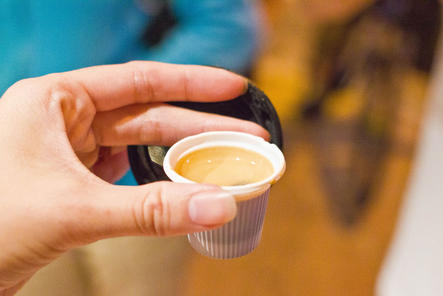In the vibrant tapestry of Cuban culture, few things encapsulate the essence of daily life as profoundly as a cup of cortadito. This beloved coffee beverage, characterized by its bold flavor and creamy texture, holds a special place in the hearts of Cubans and coffee enthusiasts worldwide. Beyond its delectable taste, cortadito embodies a cultural tradition steeped in history and social significance, reflecting the island nation’s complex heritage and enduring resilience. In this article, we embark on a journey to unravel the rich aroma and history of cortadito, delving into its origins, preparation, and enduring popularity.
Origins of Cortadito:
The roots of cortadito trace back to the coffee plantations of Cuba, where Spanish colonial influence fused with African and indigenous traditions to shape the island’s culinary landscape. While coffee cultivation in Cuba dates back to the 18th century, it wasn’t until the 19th century that coffee consumption became widespread among the populace. Initially, coffee was primarily enjoyed by the wealthy elite, but as plantations expanded, it became more accessible to all social classes.
The term “cortadito” itself translates to “cut” or “cut with,” referring to the way the espresso is “cut” with a small amount of steamed milk. This beverage emerged as a compromise between the strong espresso favored by Europeans and the sweeter, milkier concoctions preferred in the Americas. Over time, cortadito evolved into a quintessential Cuban beverage, enjoyed throughout the day as a pick-me-up or social ritual.
Preparation and Flavor Profile:
To prepare a cortadito, skilled baristas start with a potent shot of Cuban espresso, known for its robust flavor and intense aroma. The espresso is brewed using finely ground, dark-roasted coffee beans, typically sourced from regions like the Sierra Maestra mountains or the Escambray mountains in Cuba. The beans are often blended to achieve the perfect balance of bitterness and sweetness, resulting in a distinctively bold brew.
Once the espresso is extracted, a small amount of steamed milk is added, creating a creamy texture that tempers the coffee’s strength without diluting its flavor. The ratio of coffee to milk in a cortadito is crucial, with variations depending on personal preference and regional customs. Some aficionados prefer a stronger espresso flavor, while others enjoy a creamier consistency with more milk.
The hallmark of a well-made cortadito lies in its velvety crema, the golden-brown foam that crowns the espresso. This delicate layer not only adds visual appeal but also enhances the coffee’s aroma and mouthfeel, tantalizing the senses with each sip. The flavor profile of cortadito is complex yet balanced, with notes of caramel, chocolate, and toasted nuts dancing on the palate, followed by a lingering sweetness that leaves a lasting impression.
Cultural Significance:
Beyond its culinary allure, cortadito holds profound cultural significance within Cuban society. It serves as a focal point for social interactions, whether shared among friends at a local cafe or savored alone as a moment of quiet contemplation. In Cuba, coffee rituals are woven into the fabric of daily life, providing a sense of comfort and connection in a nation marked by resilience and resourcefulness.
Moreover, cortadito embodies the spirit of “sobremesa,” the cherished tradition of lingering at the table after a meal, engaging in leisurely conversation over coffee. This communal ritual fosters bonds of friendship and solidarity, transcending social divides and fostering a sense of belonging.
In addition to its role in social gatherings, cortadito serves as a symbol of Cuban identity and ingenuity. Despite facing economic hardships and political upheaval, Cubans have preserved their cultural heritage through culinary traditions like cortadito, affirming their resilience in the face of adversity.
Global Influence and Adaptations:
In recent years, cortadito has gained popularity beyond Cuba’s shores, captivating coffee enthusiasts worldwide with its irresistible charm. From bustling cafes in Miami’s Little Havana to trendy coffee shops in New York City, cortadito has found its place on menus, delighting discerning palates with its bold flavors and cultural allure.
Furthermore, innovative variations of cortadito have emerged, reflecting the diverse culinary landscape of the global coffee scene. Some establishments offer creative twists on the classic recipe, incorporating ingredients like cinnamon, cardamom, or even condensed milk to elevate the flavor profile. These reinterpretations pay homage to the original cortadito while infusing it with new dimensions of taste and texture.
Conclusion:
Cortadito transcends its status as a mere beverage, embodying a centuries-old tradition that speaks to the soul of Cuba. With each sip, one can taste the history, culture, and resilience of a nation shaped by its love affair with coffee. Whether enjoyed in the bustling streets of Havana or savored in a cozy corner cafe halfway across the world, cortadito invites us to partake in a sensory journey that celebrates the beauty of shared moments and cherished traditions. As long as there are beans to grind and cups to fill, the legacy of cortadito will continue to enrich our lives, one sip at a time.
